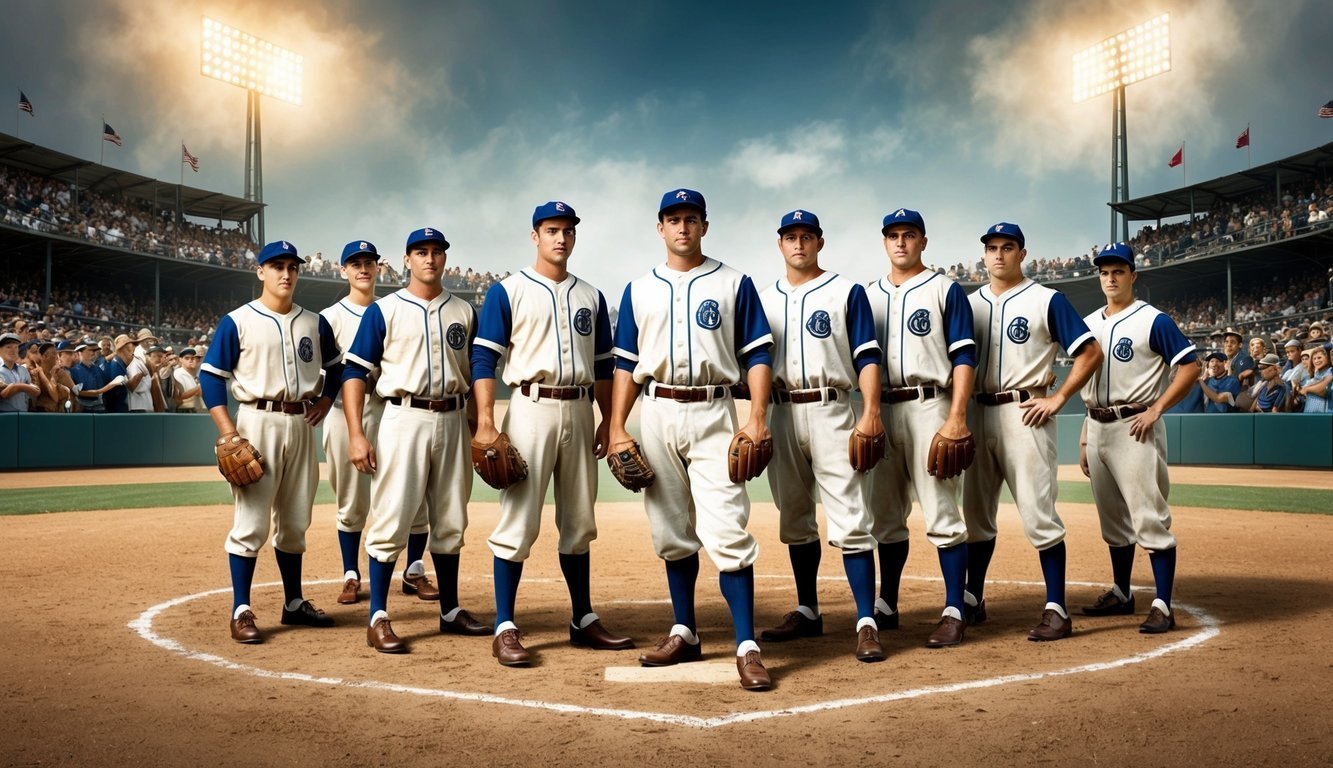The Dead Ball Era of baseball, spanning from 1900 to 1920, produced some of the game’s most legendary players.
This period saw low-scoring games and a focus on strategy, with teams averaging just 3.4 runs per game.
Notable stars like Walter Johnson, Ty Cobb, and Honus Wagner dominated the sport with their exceptional skills and unique playing styles.
Baseball fans often romanticize this era for its emphasis on small ball tactics and defensive prowess.
Players like Zack Wheat, who led the Brooklyn team to World Series appearances in 1916 and 1920, exemplified the consistency and skill required to succeed in this challenging period.
Wheat’s ability to bat over .300 in thirteen seasons showcased the importance of contact hitting during a time when home runs were scarce.
The Dead Ball Era also saw the rise of iconic pitchers who took advantage of the era’s conditions.
Cy Young and Christy Mathewson became household names, dominating batters with their precision and endurance.
These players set the stage for the evolution of baseball, leaving a lasting impact on the sport’s history and strategy.
Notable Players and Their Impact
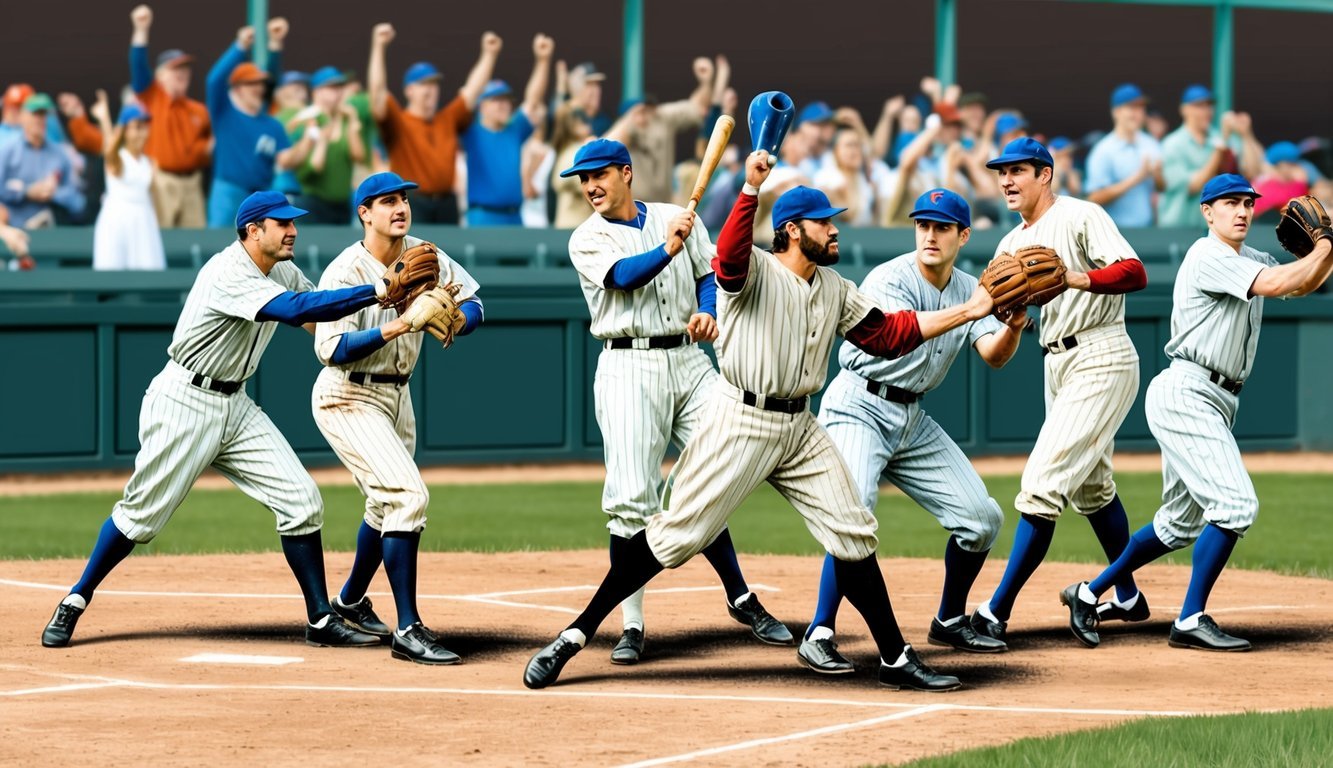
The dead-ball era produced some of baseball’s most legendary figures, whose skills and strategies shaped the game for generations to come.
These players excelled in hitting, pitching, and fielding despite the challenging conditions of the time.
Legendary Hitters
Ty Cobb stood out as the era’s premier batter, maintaining an incredible .366 lifetime batting average.
His aggressive baserunning helped him rack up 892 stolen bases.
Honus Wagner, known as “The Flying Dutchman,” dominated the National League with his all-around skills.
He won eight batting titles and excelled defensively at shortstop.
“Shoeless” Joe Jackson, despite his controversial career end, was a natural hitter with a .356 lifetime average.
Tris Speaker’s defensive prowess in center field complemented his .345 career average.
Eddie Collins, a master of the hit-and-run play, stole 744 bases and collected 3,315 hits.
Nap Lajoie, an early star of the American League, hit .338 over his career.
Zack Wheat batted over .300 in thirteen seasons with Brooklyn, leading them to two World Series appearances.
Dominant Pitchers
Christy Mathewson defined pitching excellence, winning 373 games with precise control and a devastating fadeaway pitch (now called a screwball).
Walter Johnson, “The Big Train,” overpowered batters with his blazing fastball, securing 417 wins and a record 110 shutouts.
Cy Young bridged the 19th and 20th centuries, amassing an unmatched 511 wins.
His durability and consistency set a standard for pitchers.
Eddie Plank, a crafty left-hander, won 326 games and was known for his crossfire delivery.
Pitchers often used tactics like the spitball to gain an advantage.
Ray Chapman’s tragic death in 1920, after being hit by a pitch, led to rule changes that would end the dead-ball era.
Influential Fielders
Fielding took on great importance during this low-scoring period.
Fielder Jones excelled as both an outfielder and manager, leading the “Hitless Wonders” Chicago White Sox to the 1906 World Series title.
The Chicago Cubs’ double-play combination of Joe Tinker, Johnny Evers, and Frank Chance (immortalized in poetry) revolutionized infield defense.
Their precise teamwork helped the Cubs win four pennants and two World Series.
Roy Thomas, a specialist in bunting and getting on base, perfected the art of defensive outfield play.
His ability to track fly balls in Philadelphia’s spacious Baker Bowl made him a valuable asset.
Frank “Home Run” Baker earned his nickname by leading the league in home runs four times, despite the era’s power shortage.
His clutch hitting and solid third base play were crucial to the Philadelphia Athletics’ success.
Strategies and Play Styles

The Dead Ball Era was defined by unique offensive and defensive approaches that emphasized finesse, speed, and strategic gameplay.
Players and teams developed specialized techniques to gain advantages in low-scoring contests.
Offensive Strategies
Batters focused on contact hitting and placing the ball strategically. “Small ball” tactics were crucial, with teams relying on bunts, stolen bases, and hit-and-run plays to manufacture runs.
Speed was a prized asset.
Fast runners like Ty Cobb excelled at taking extra bases and pressuring defenses.
Stolen base attempts were frequent, keeping pitchers and catchers on edge.
Sacrifice bunts were common, used to advance runners into scoring position.
This tactic reflected the era’s emphasis on moving runners station-to-station rather than relying on extra-base hits.
Hit-and-run plays were popular, combining base running aggression with controlled bat control.
This strategy aimed to create defensive gaps and avoid double plays.
Defensive Techniques
Fielders prioritized sure-handedness over flashy plays.
Gloves were smaller than modern versions, emphasizing soft hands and quick transfers.
Infielders played closer to their bases, ready to cover on bunt attempts or steal tries.
Double play combinations practiced extensively to turn two quickly on the era’s harder infield surfaces.
Outfielders played shallow, reflecting the lack of power hitting.
They focused on cutting off hits in the gaps and making strong, accurate throws to prevent extra bases.
Pitchers relied on movement and deception rather than pure velocity.
They worked quickly, changing speeds and locations to keep batters off-balance in an era when pitching dominated.
Historic Teams and Ballparks
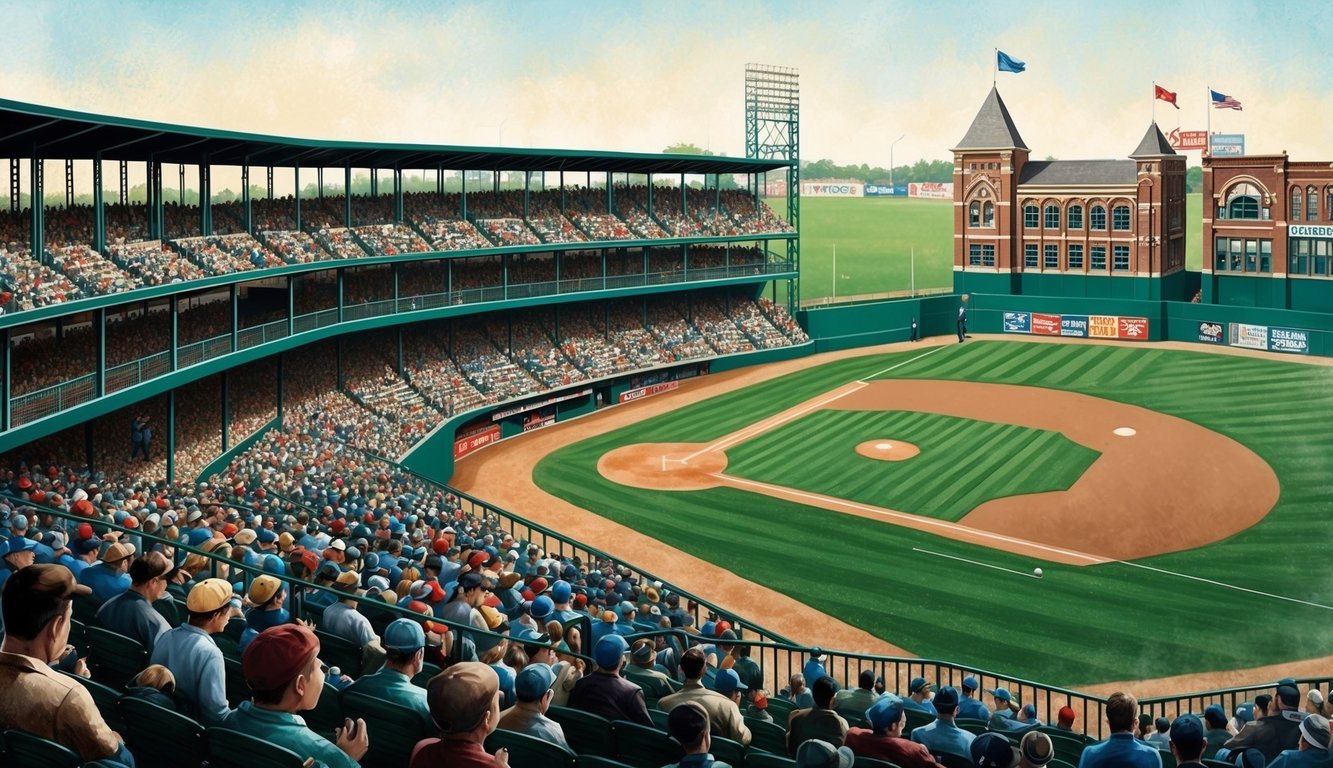
The Dead Ball Era saw iconic teams and legendary ballparks that shaped baseball history.
These venues and franchises left an indelible mark on America’s pastime during this low-scoring period.
Legendary Teams
The Chicago Cubs dominated the National League in the early 1900s, winning four pennants and two World Series titles between 1906 and 1910.
Their fierce rivals, the New York Giants, captured four consecutive NL pennants from 1921 to 1924.
The Boston Red Sox emerged as an American League powerhouse, claiming four World Series championships between 1912 and 1918.
Their success was fueled by stars like Tris Speaker and Babe Ruth.
The Philadelphia Athletics, led by manager Connie Mack, built a dynasty that won three World Series titles in four years from 1910 to 1913.
The team featured standout players such as Eddie Collins and Home Run Baker.
Famous Ballparks
West Side Grounds in Chicago hosted the Cubs from 1893 to 1915.
Its spacious outfield favored pitchers and reflected the Dead Ball Era’s low-scoring nature.
The Polo Grounds in New York City was home to both the Giants and Yankees at different times.
Its unique horseshoe shape created extremely short foul lines and a vast center field.
Fenway Park opened in 1912 and remains an iconic symbol of baseball history.
Its famous Green Monster in left field has challenged hitters for over a century.
Shibe Park in Philadelphia, built in 1909, was the first concrete-and-steel ballpark in the Major Leagues.
It hosted both the Athletics and Phillies during its long history.
Significant Events and Changes
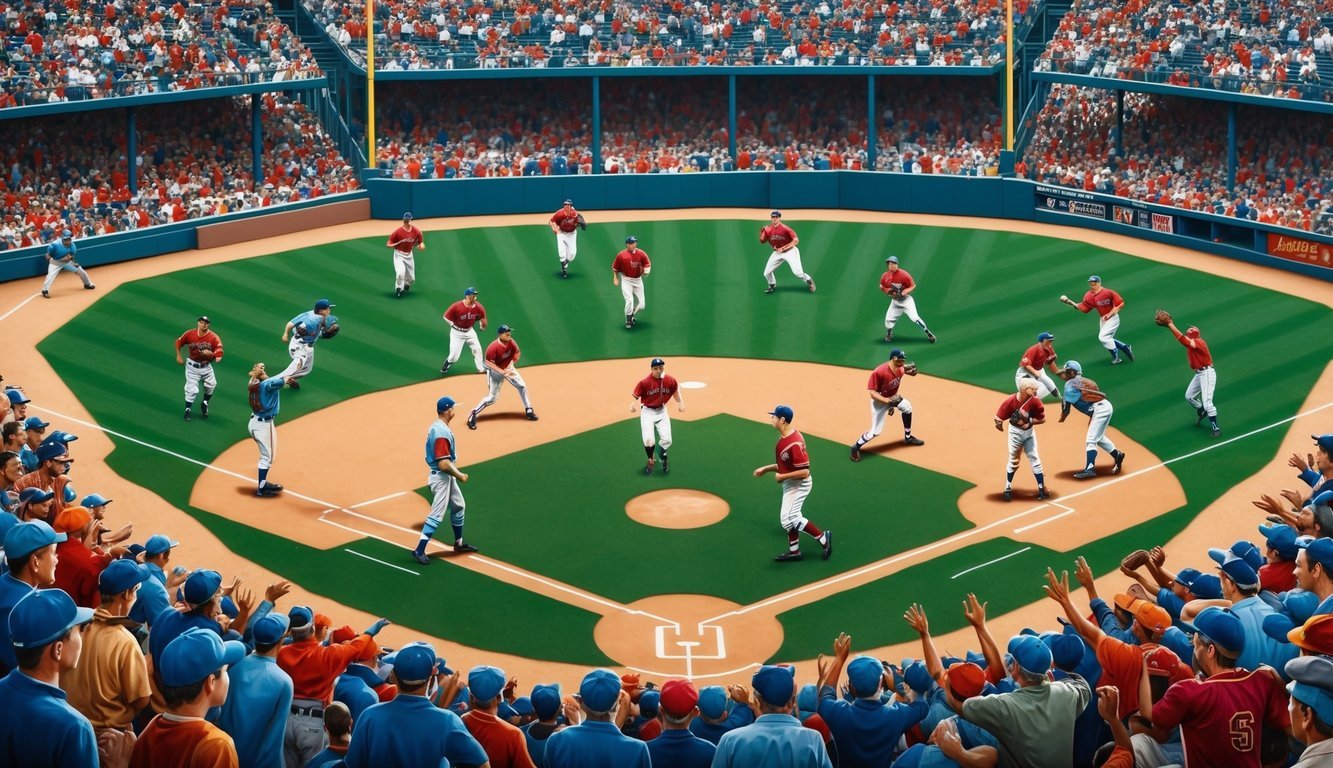
The Dead Ball Era saw pivotal developments that reshaped baseball.
Rule adjustments and scandals left lasting impacts on the sport.
Game-Changing Rules
The Foul Strike Rule of 1901 marked a turning point.
Foul balls now counted as strikes, except for the third strike.
This change favored pitchers and lowered scoring.
In 1908, the cork-centered baseball debuted.
While intended to boost offense, its effects were minimal during this era.
Umpires gained more authority in 1910.
They could now eject players for unsportsmanlike conduct, helping maintain order on the field.
The emergence of the spitball in the early 1900s gave pitchers an edge.
This pitch’s unpredictable movement baffled batters until its ban in 1920.
Infamous Scandals
The 1919 World Series became forever tainted by the Black Sox Scandal.
Eight Chicago White Sox players were accused of fixing games for gambling payoffs.
This shocking event rocked baseball to its core.
It exposed the growing influence of gambling on the sport.
In response, team owners appointed Judge Kenesaw Mountain Landis as the first Commissioner of Baseball in 1920.
His main task? Cleaning up the game and restoring public trust.
The scandal led to stricter rules against gambling.
Players caught betting on games now faced permanent bans from baseball.
Legacy and Evolution
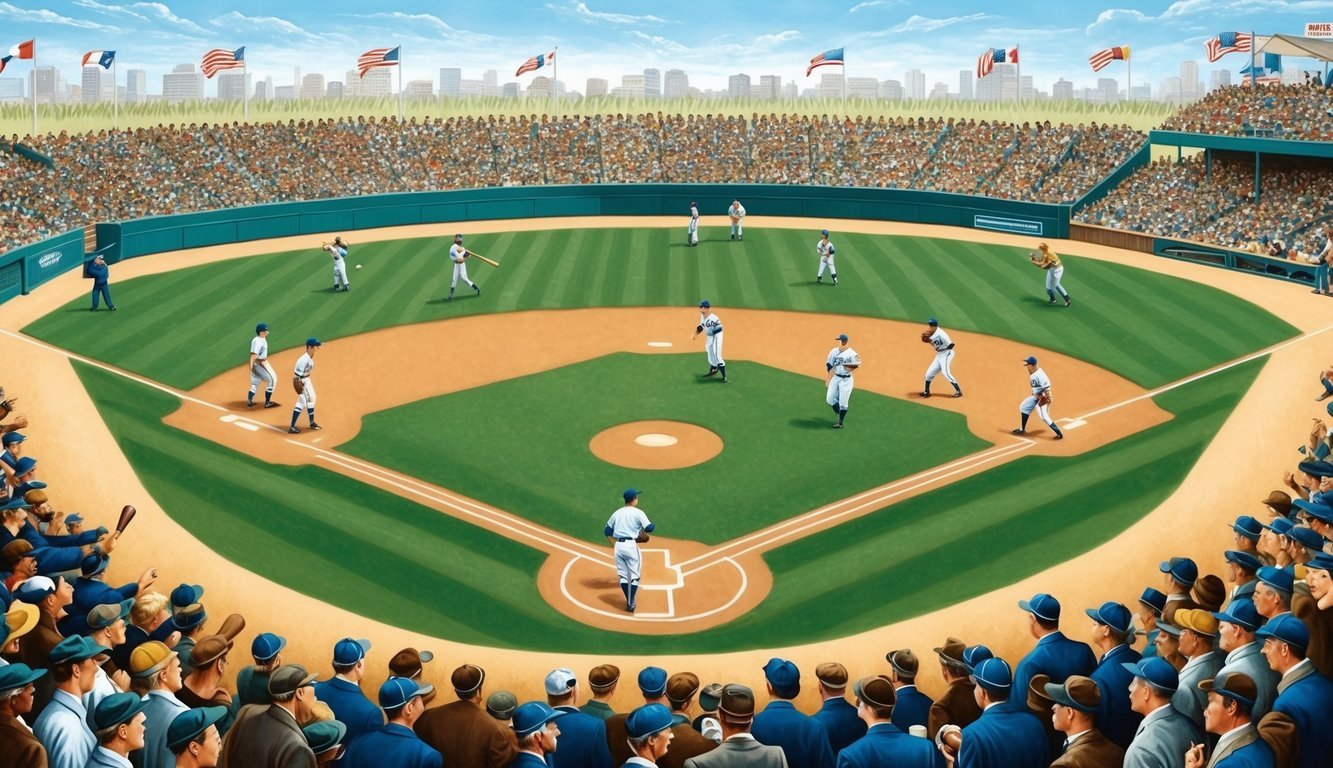
The Dead Ball Era left an indelible mark on baseball history, shaping the game’s future and honoring its past heroes.
Its influence extended far beyond the field, impacting how the sport evolved and how its greatest players are remembered.
Transition into the Livelier Ball Era
As baseball moved away from the Dead Ball Era, the game underwent significant changes.
Owners and league officials introduced a livelier ball in the 1920s, leading to increased offensive output.
This shift coincided with the rise of Babe Ruth, whose power-hitting prowess captivated fans and changed the sport’s landscape. Babe Ruth’s impact on baseball extended beyond his impressive home run totals; he transformed how the game was viewed by fans and players alike.
His larger-than-life persona and charismatic style brought a new level of excitement to the sport, drawing unprecedented crowds to ballparks across the nation.
As a result, the popularity of baseball soared, solidifying its place as America’s pastime and paving the way for future generations of power hitters.
The new era saw a surge in home runs and higher-scoring games.
Players adapted their strategies, with a greater emphasis on power hitting.
This transition marked a turning point in baseball’s history, setting the stage for the modern game we know today.
Hall of Fame Recognitions
Many stars from the Dead Ball Era earned their place in Cooperstown.
The National Baseball Hall of Fame enshrined legendary figures like Ty Cobb, Honus Wagner, and Christy Mathewson.
Their inductions have preserved their legacies for future generations.
These players’ achievements often became more impressive in retrospect.
Their careers were set against the backdrop of spacious ballparks and less lively baseballs.
Their inductions highlighted the era’s unique challenges and the exceptional skills required to excel during that time.
The Hall of Fame continues to honor Dead Ball Era players, ensuring their contributions to American baseball are never forgotten.
Their plaques stand as testaments to an era that shaped the foundations of the modern game.
